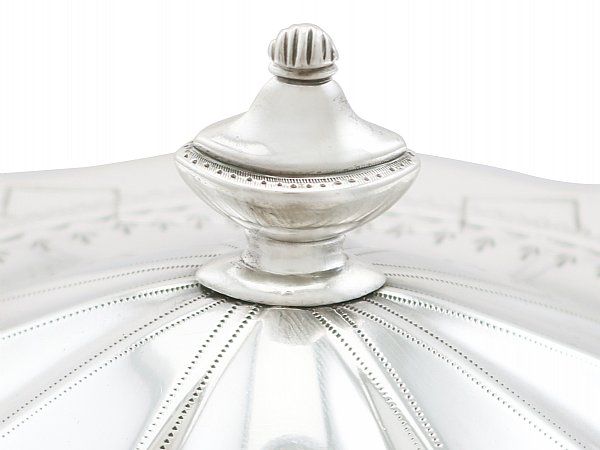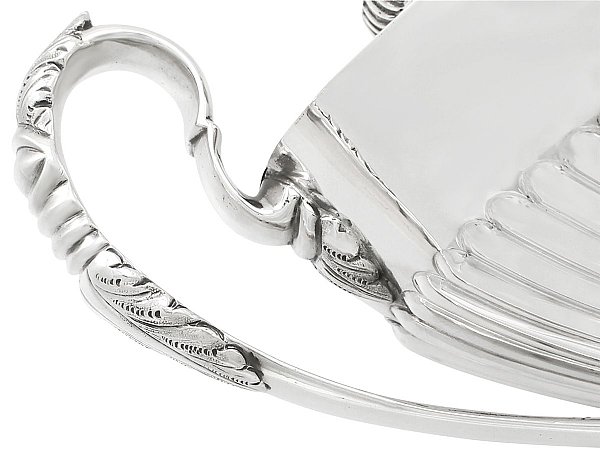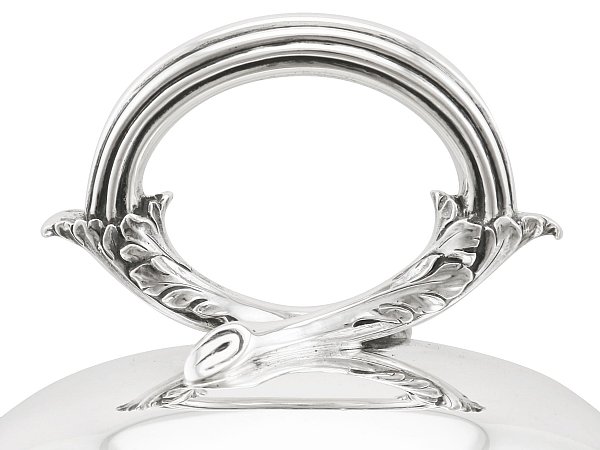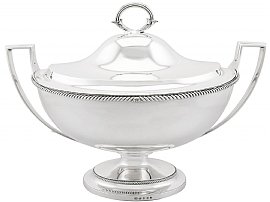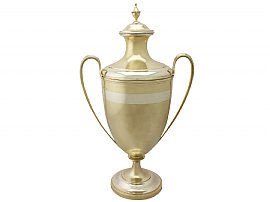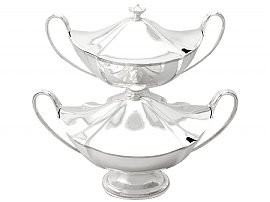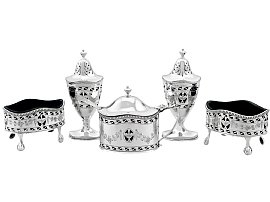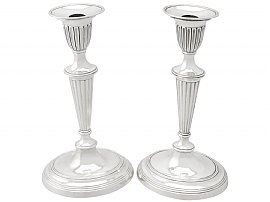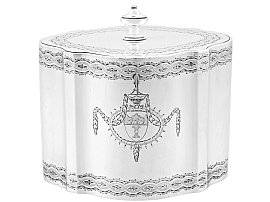Adams Style Silver
The Adams style of silver – sometimes referred to as the Classic period – emerged in the mid-1700s. Following the Rococo period, the appeal of Adams style silver came from its relatively restrained themes and motifs. Rococo silver was incredibly ornate, while the main source of inspiration for Adams style silver was Greco-Roman aesthetics.
The excavation of Herculaneum in the mid-1700s, followed later by Pompeii, unveiled a plethora of bronze and silver items that were perfectly preserved by volcanic ash and lava, which had consumed both cities. This preservation meant that the styles from their respective regions and eras were easy to replicate in the 18th century.
Contemporary silversmiths were inspired to imitate the ancient styles. The contrast between the ornate extravagance of Rococo styles and the classical influence of the Adams style allowed it to take off in popularity. Features like burel leaves, floral swags, ram heads, lion heads, and knotted ribbons were exceedingly popular. Pierced work on pieces like trays, baskets, and entrée dishes was also prevalent because of the Greco-Roman influence.
Fused plate and steam milling, stamping, and rolling meant that silver was much cheaper to produce in large volumes. Matthew Boulton was among the finest producers of fused plate silverware at this time. New items of silver like argyles and entrée dishes were made in a stlye befitting the ancient techniques that had come to be admired.
Some key silversmiths of the Adams style include Hester Bateman, Paul Revere, and Robert Hennell. These crafters made some of the most collectable pieces of this era. Towards the end of the 18th century, the Adams style became less popular. Widespread financial hardship meant that designs had become more restrained and less ornate.
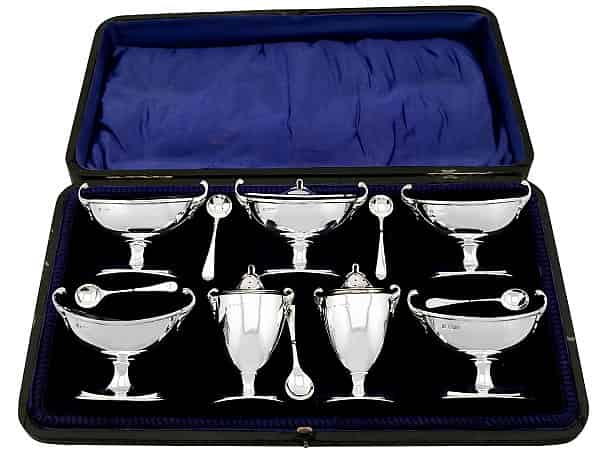
Contemporary architect Robert Adam designed furniture and other decorative pieces for wealthy patrons, including a series of designs for silverware. These designs were acknowledged by silversmiths of the time, and they were adapted to be available to the more average household of the time.
Ovoid outlines and Greco-Roman vase shapes are common across the Adams style. Decorative touches in the Adams style are also faithful to Greco-Roman themes: floral swags, laurel leaves, knotted ribbons, ram and lion heads, masks and figures, beaded mouldings, pierced work on trays. Candlesticks with fluted column forms topped by capitals were widespread at this time also.
The volume and availability of antique silver at this time was greatly increased due to the development of fused plate and the advent of steam. A lot of silver at the time was made for household use rather than for display purposes, another reason for this less ornamental style to have had increased popularity.
Today, the Adams style is a popular collector’s silver, particularly its candlesticks and soup tureens.
